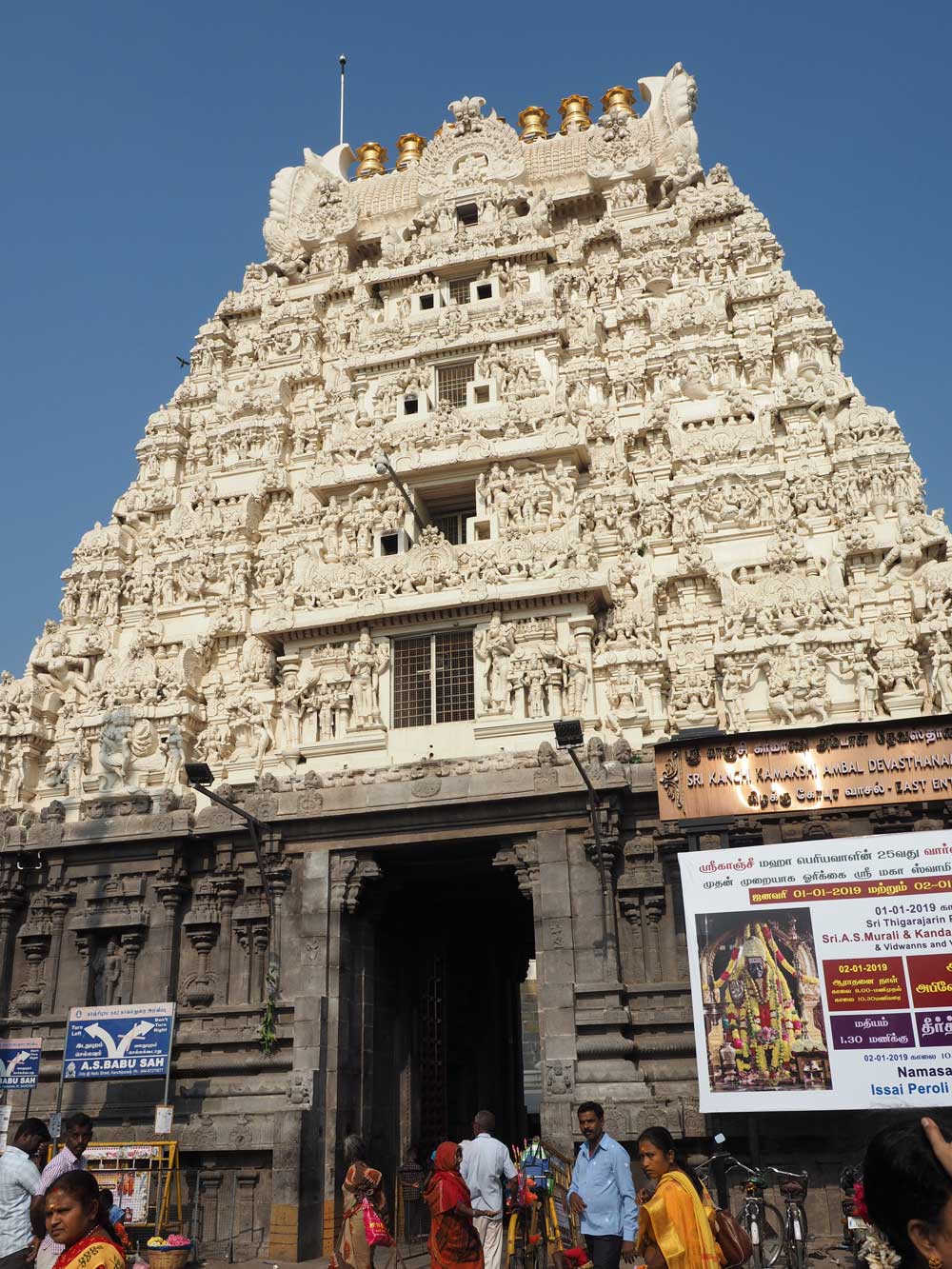
Eastern gateway of Kamakshi Amman Temple
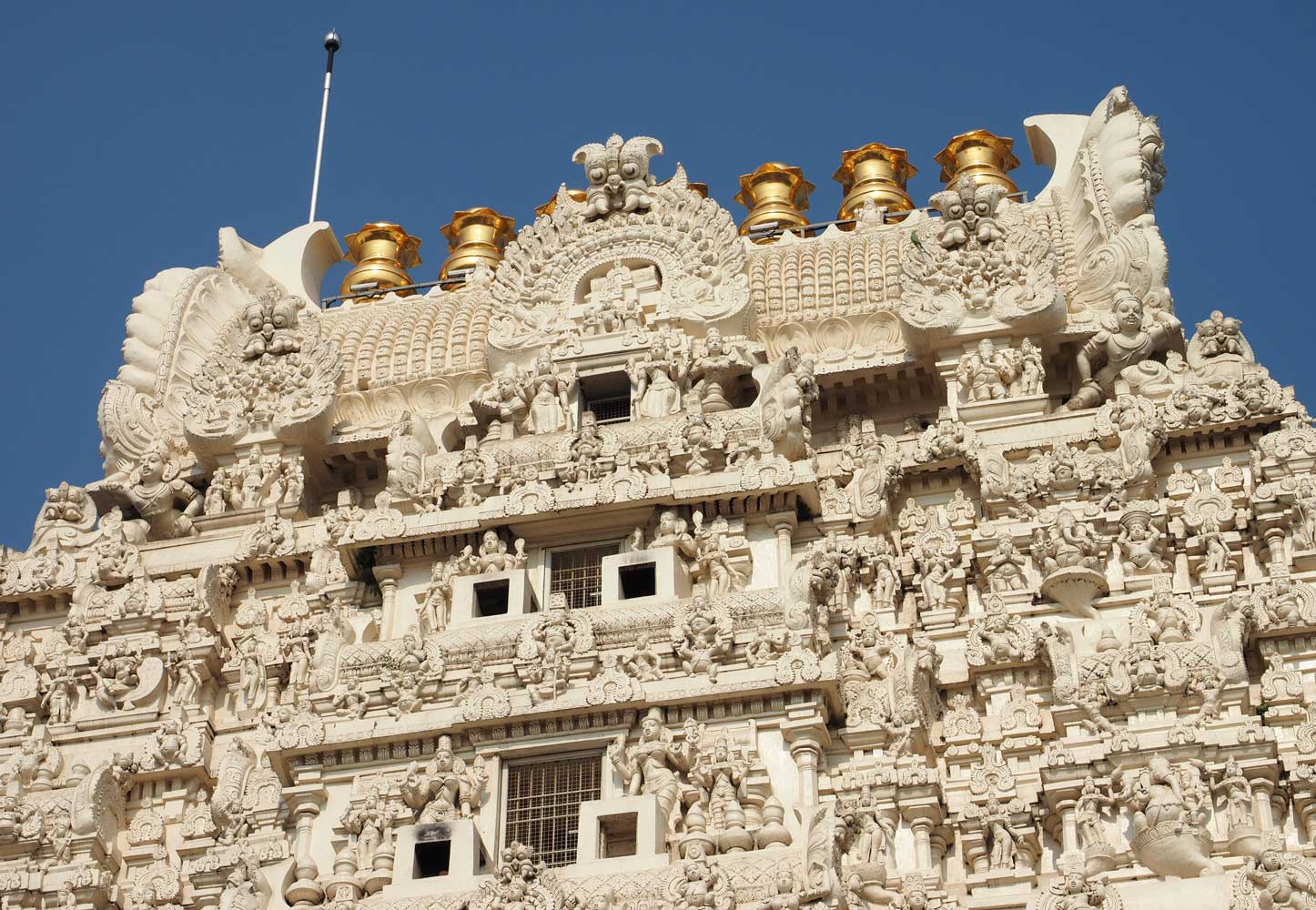
A lot is happening on the gateway!
30 December Kanchipuram
I had an extra day between my Bangalore and Chennai
Airbnb bookings, so decided to visit the famous Hindu temples in Kanchipuram, about
80 kilometers southwest of Chennai. I had gotten a bus ticket at a travel agency
near the Bangalore city train station for a departure at about 11:30 a.m., which
should have gotten me to Kanchipuram in time to see temples both in the evening
and the following morning. The bus didn’t show up until two hours later, then spent
an hour cruising around Bangalore in search of additional passengers. The air-conditioned
‘Volvo’ bus was clean and had 2x2 seating, luxurious by Indian standards, but made
only one toilet stop on the long drive. I got dropped off well after dark at a highway
junction about 6 kilometers north of Kanchipuram. Police here helped me get a three-wheeler
for the ride to my hotel, Vasanth Villa, that I had reserved through Booking.com.
I arrived too late to visit temples, so just went to a branch of Saravana Bhavan,
the largest South Indian vegetarian restaurant chain in the world, for a light dinner.
31 December Chennai
The Lonely Planet guidebook describes five of Kanchipuram’s
many temples, and I arranged to go around to them in a three-wheeler for a fee of
700 rupees ($10). We first went to Kamakshi Amman Temple, surrounded by a high wall
with four towering white gateways near the center of town. Inside the compound,
crowded with pilgrims, the main temple had smaller white gateways and a golden tower
that rose from the sanctuary. Goddess Kamakshi/Parvati resides inside, but as a
non-Hindu, I couldn’t go into the main temple to see her. So I walked around it,
passing a large tank (stepped water basin) and a many-pillared 16th-century marriage
hall. Many figures of powerful women adorn the temple stonework.

Eastern gateway of Kamakshi Amman Temple

A lot is happening
on the gateway!
Pallava king Narasimhavarman II built Kailasanatha in the 8th century in honor of Shiva and it’s now Kanchipuram’s oldest temple. A large stone Nandi faces the main entrance, flanked by a low sandstone wall with niches, some containing black stone lingams. In the courtyard that encircles the main temple, a guide attached himself to me and proved valuable because he knew hidden features such as the best remnants of brightly colored reliefs and murals inside the meditation chambers. The temple would have been spectacularly colorful in the old days! It’s still an active place of worship, and I could step inside to view the large black stone Shiva lingam in the sanctum.
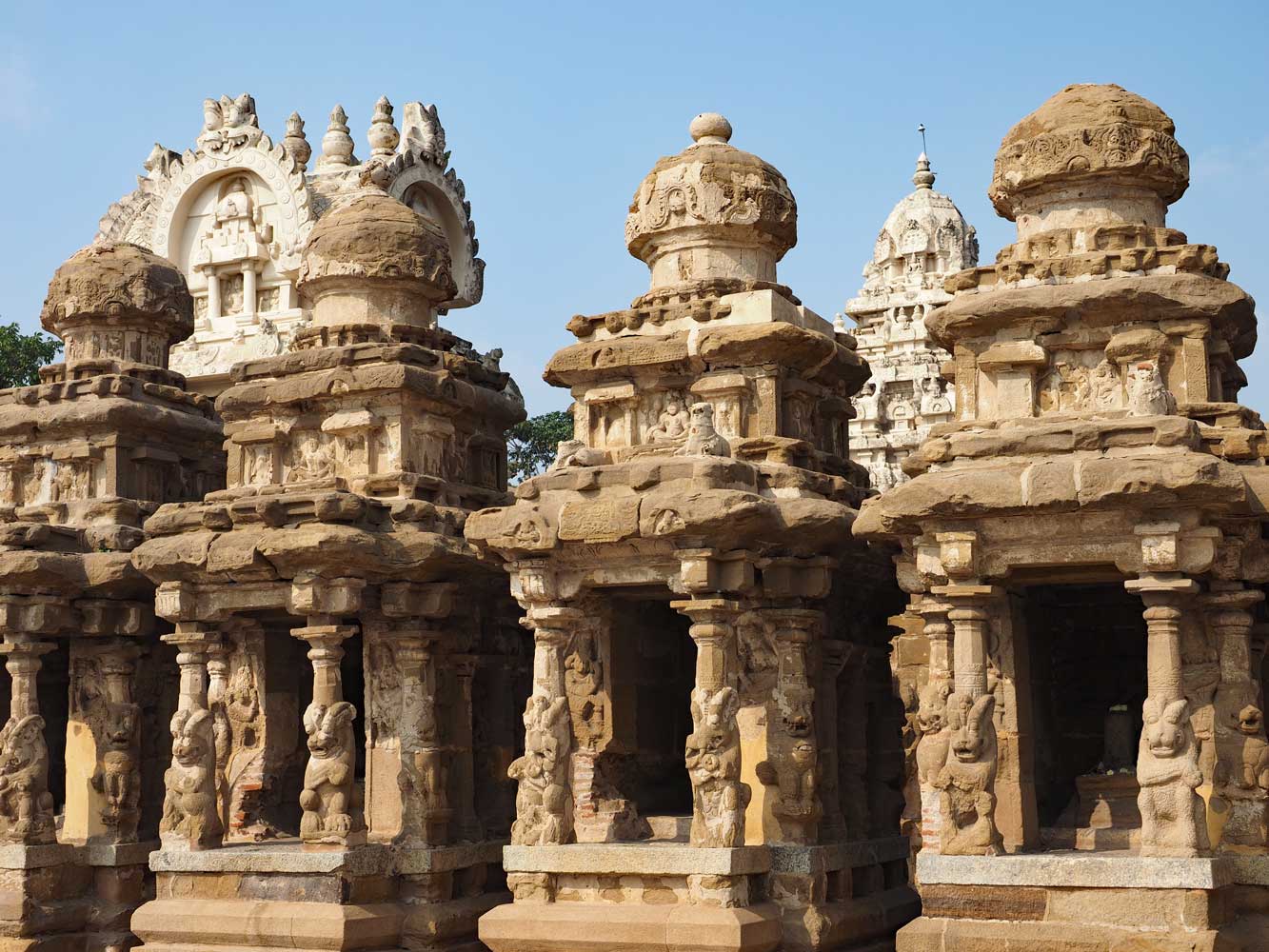
Shiva lingams reside in some of these little shrines in front of Kailasanatha.
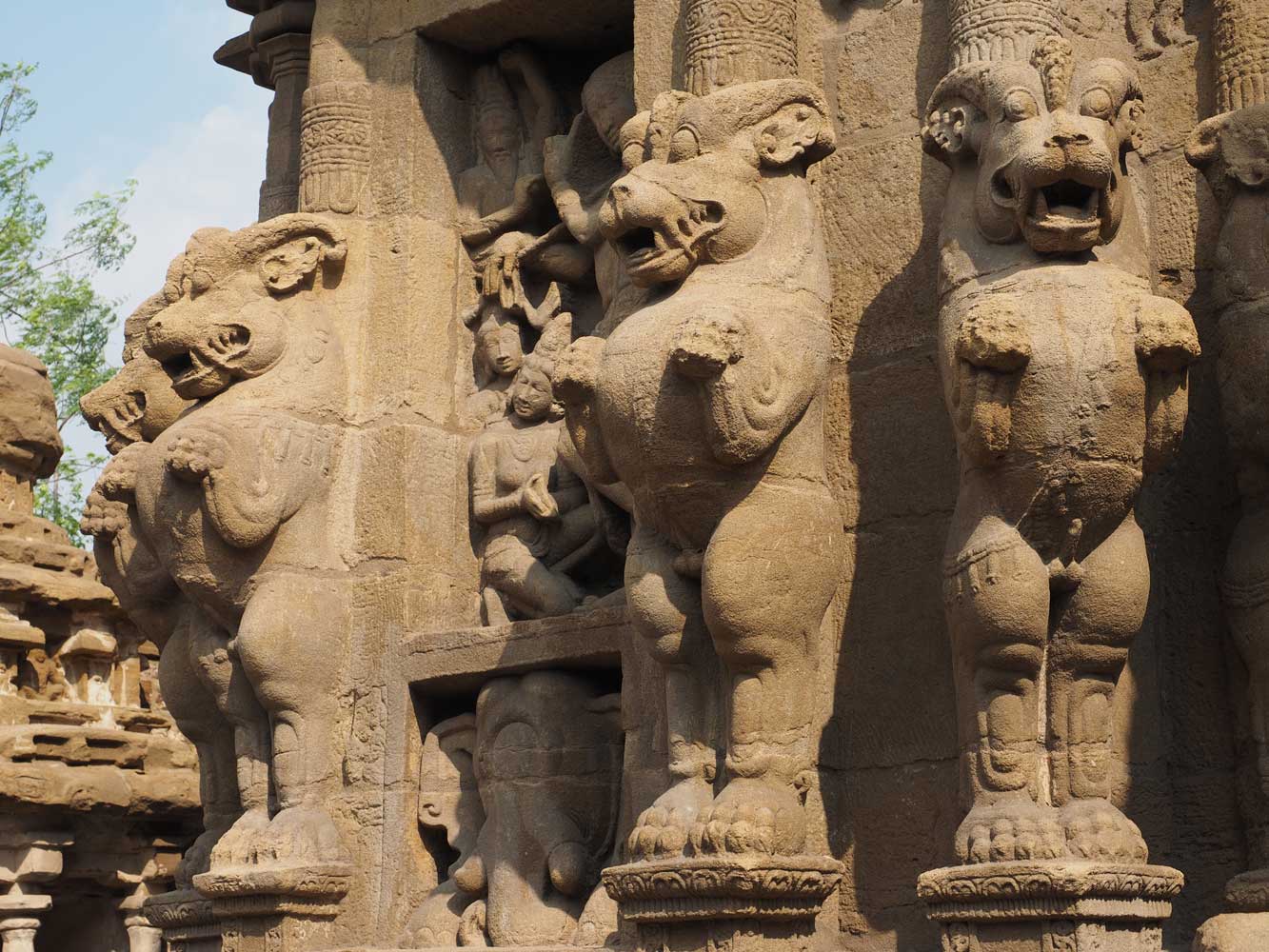
Lions guard the
temple!
Dwarfs
dance on a frieze.
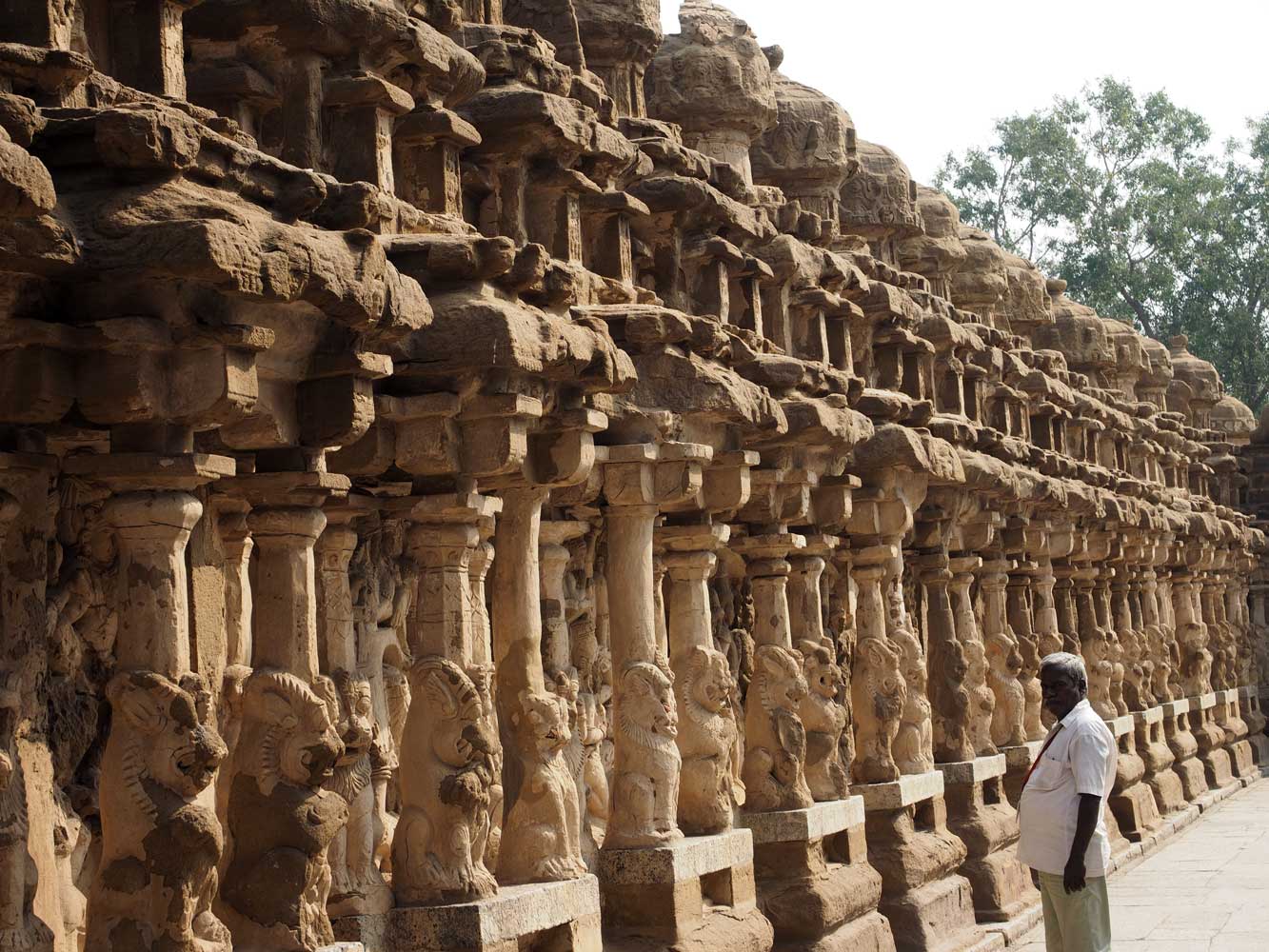
Lions stand outside
little meditation chambers that face the temple.
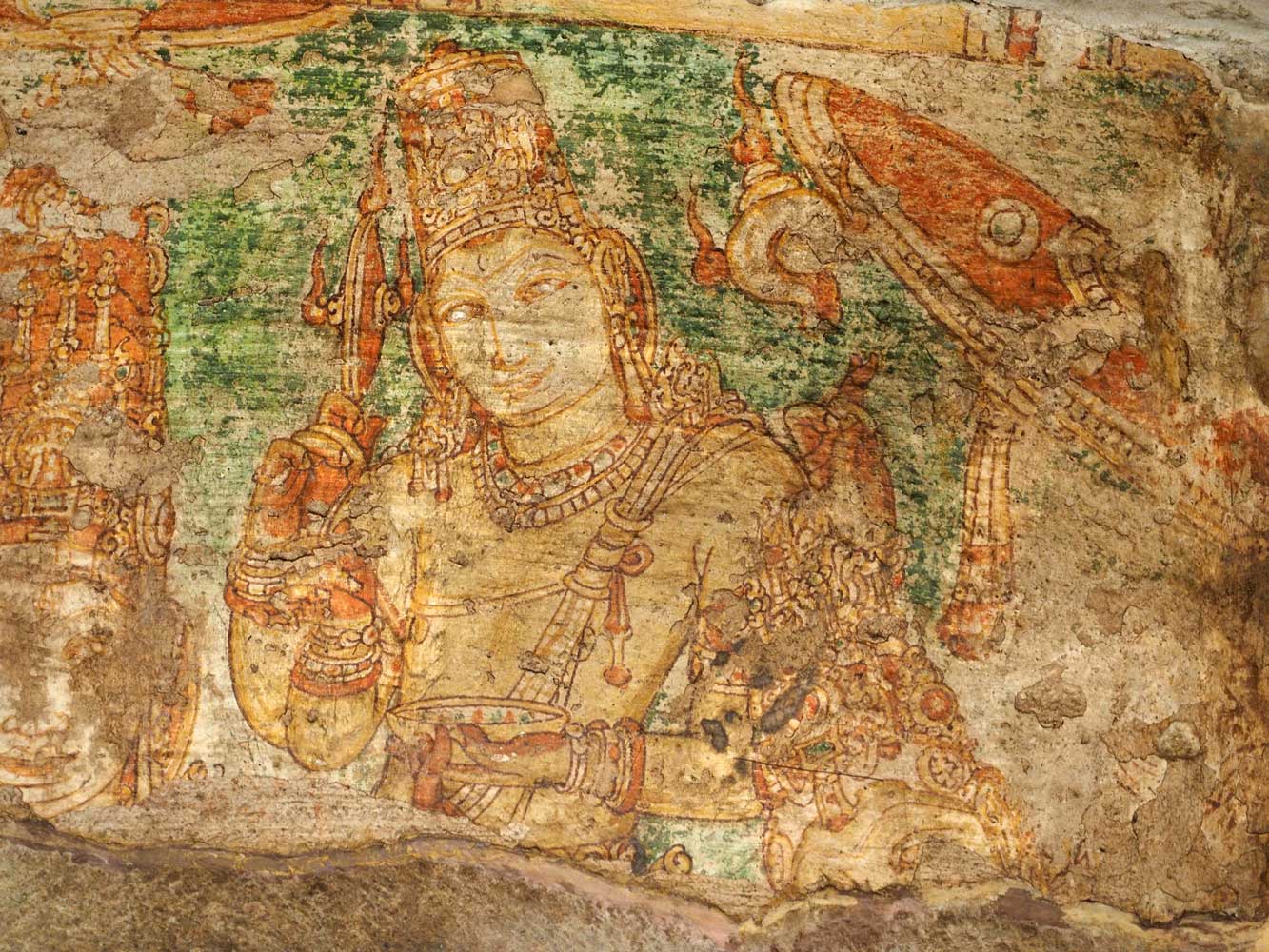
A mural inside a meditation
chamber
Vaikunta Perumal Temple also dates back to Pallava times, but is home to Vishnu. Lion pillars support the corridor around the main temple, and weathered reliefs illustrate historical and mythical events. A seated image, decorated with gold coverings, resides in the central sanctum. Although not normally open, a middle level is said to have a reclining Vishnu and the top level a standing Vishnu.
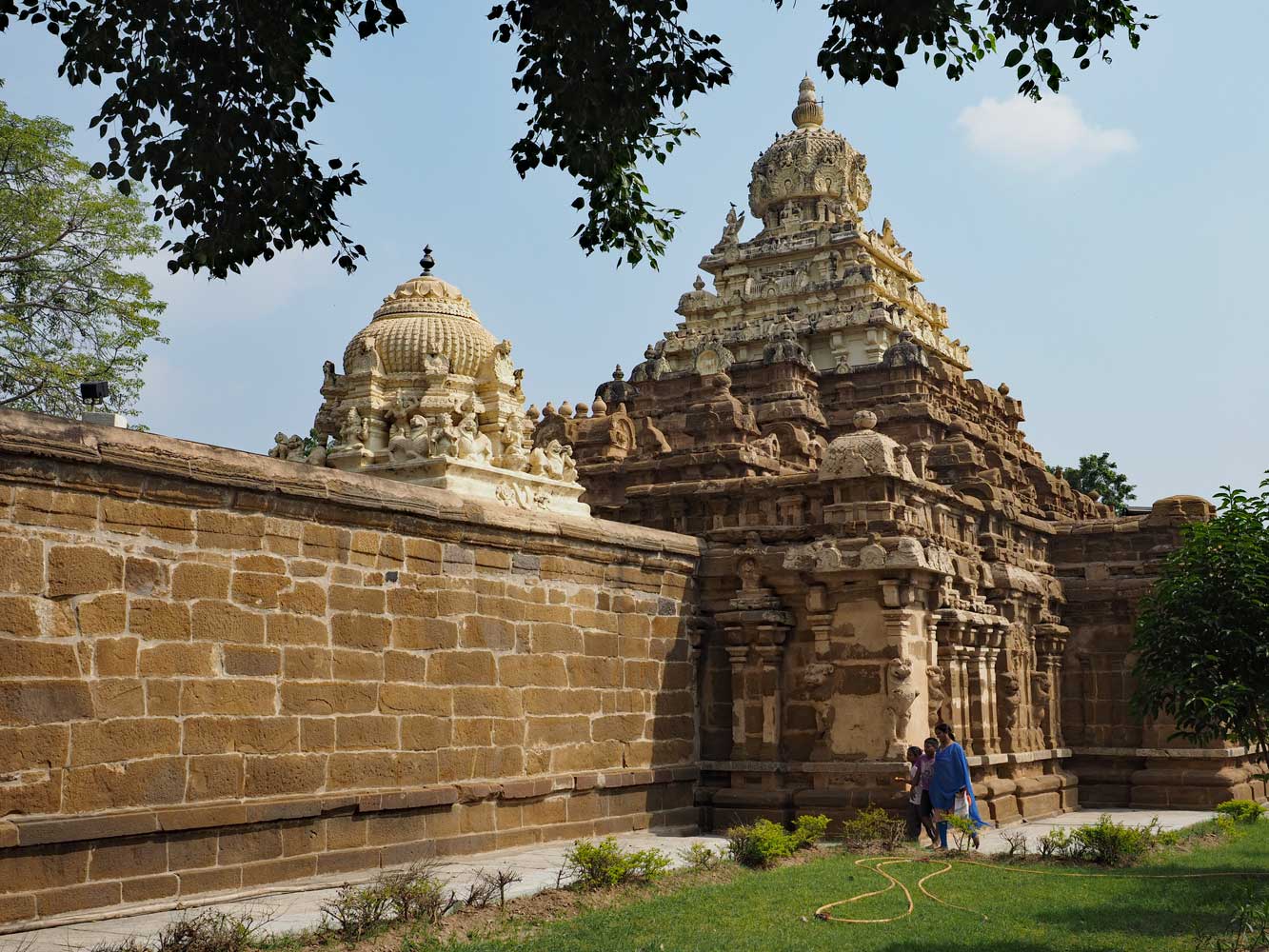
Vaikunta Perumal Temple
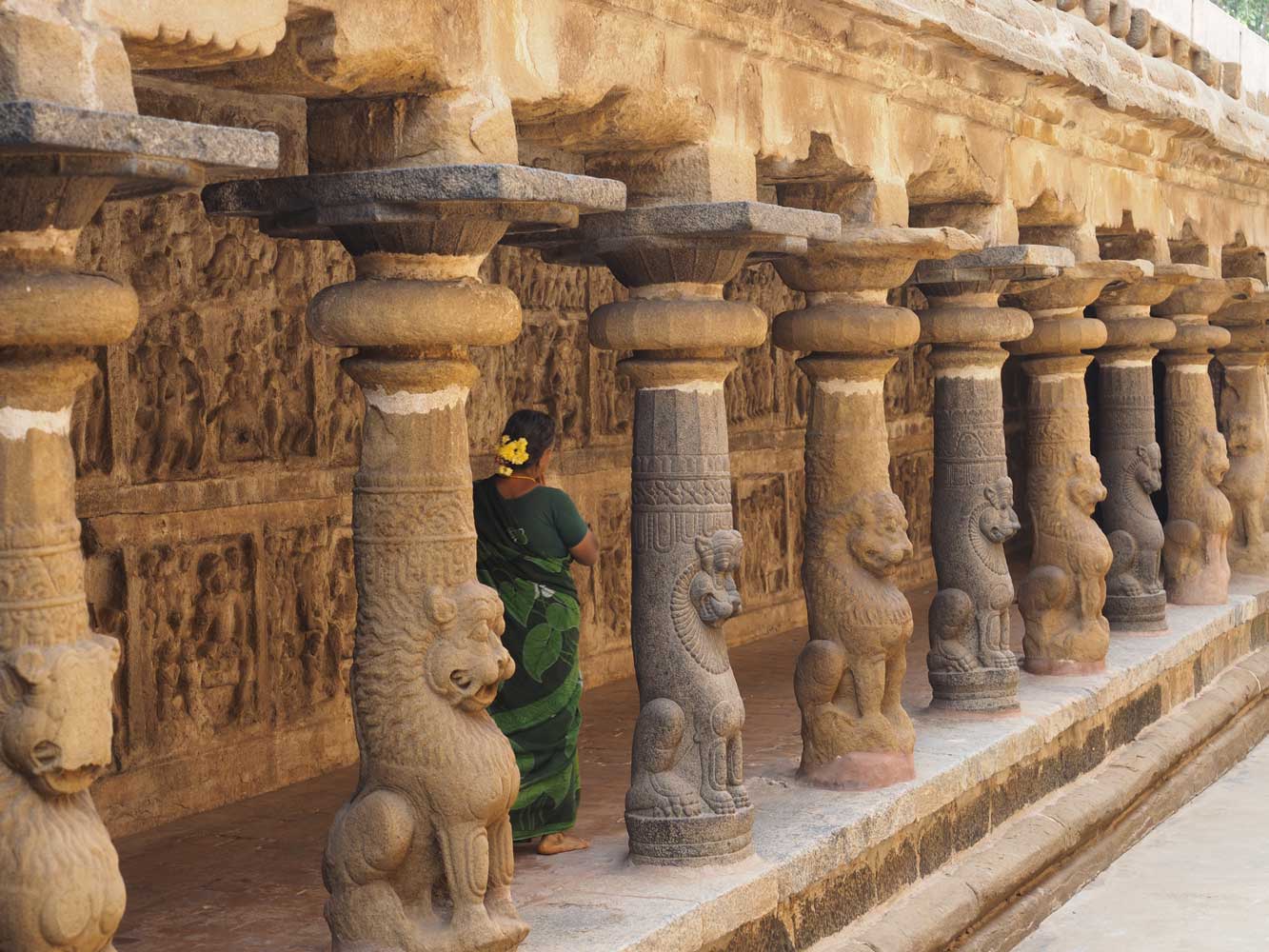
Lion columns and weathered
murals line the cloister.
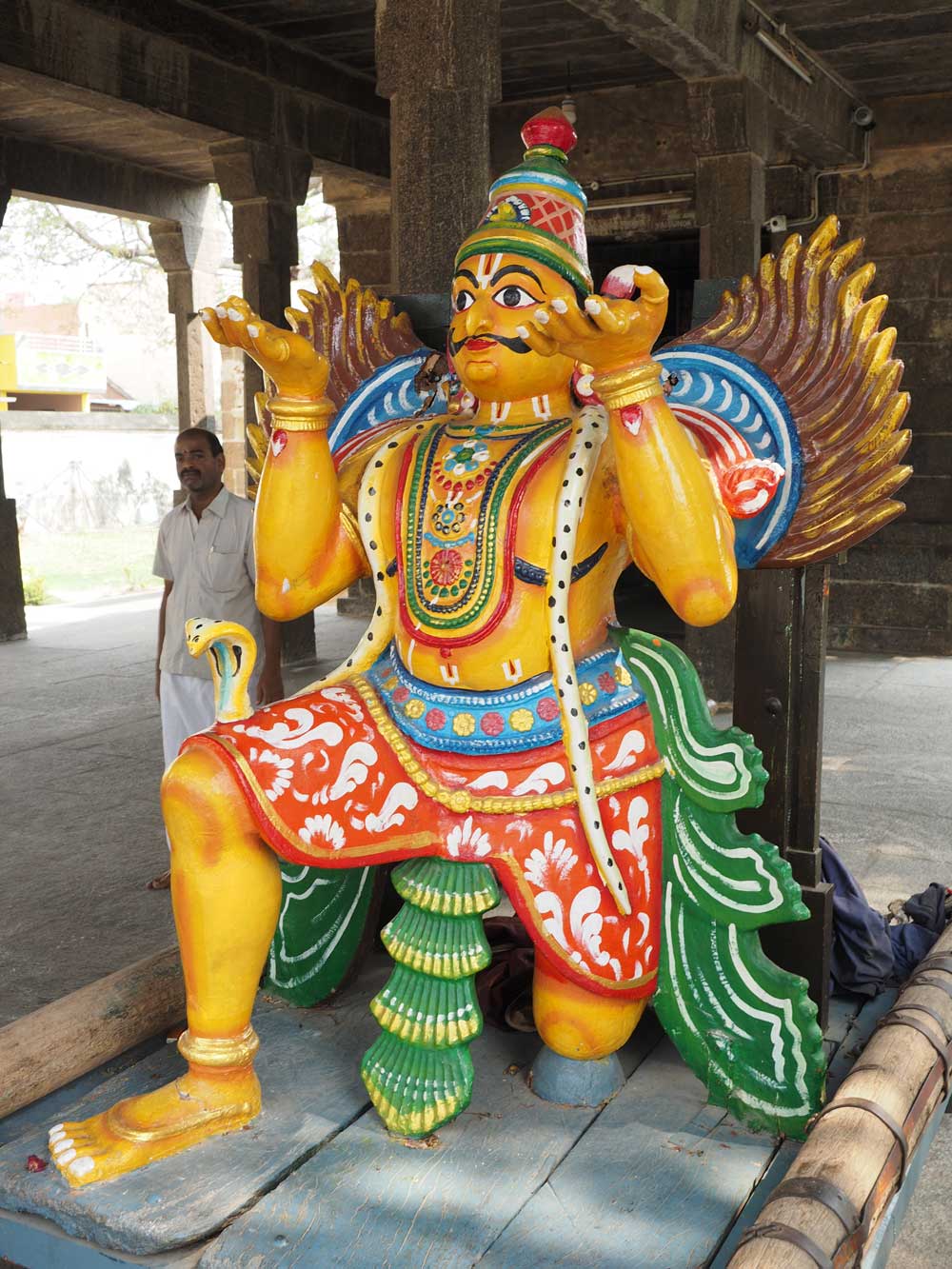
An image of the god
Vishnu rides atop this carved wooden Garuda during processions
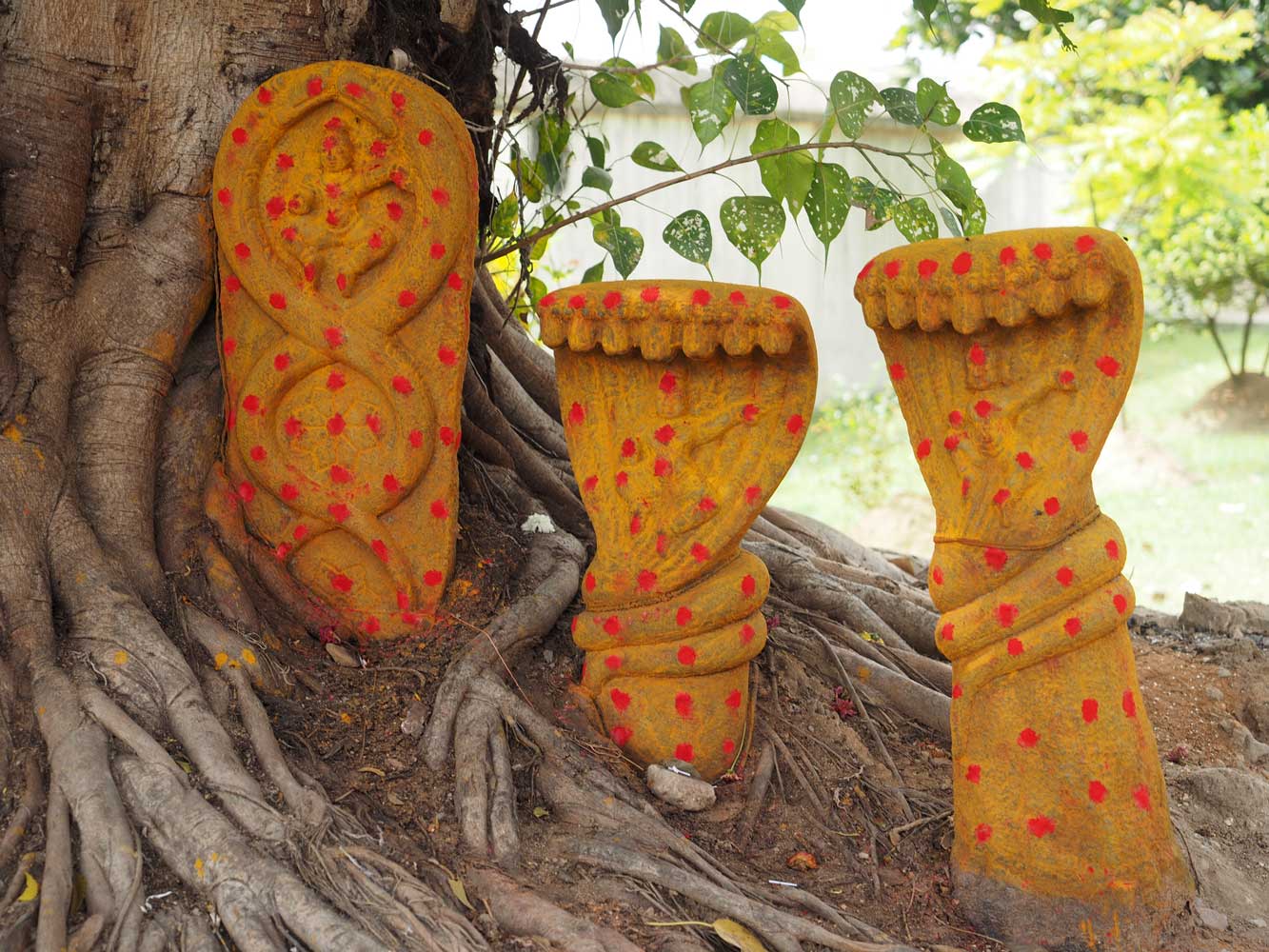
Snake god images stand
under a sacred fig (Ficus religiosa) tree near the temple.
Ekambareshwara Temple has an impressive south entrance tower 59 meters high,
but the temple was inexplicably closed this morning. The sanctum holds a Shiva lingam
made of earth, as this is one of South India’s five Shiva temples associated with
the five elements.
Lastly I visited Varadaraja Temple, a huge complex with
high white towers dedicated to Vishnu that dates to Chola times in the 11th century.
Non-Hindus cannot enter the sanctum, but the marriage hall is the big attraction
because each of the 96 stone pillars has detailed carvings. In the center a giant
stone turtle supports a platform used during a festival. A guide identified many
of the figures and pointed out how a horseman on one side of a pillar wore North
Indian dress while the horseman on the other side had South Indian. But my guide
was most keen on pointing out the love-making (Kama Sutra) scenes!
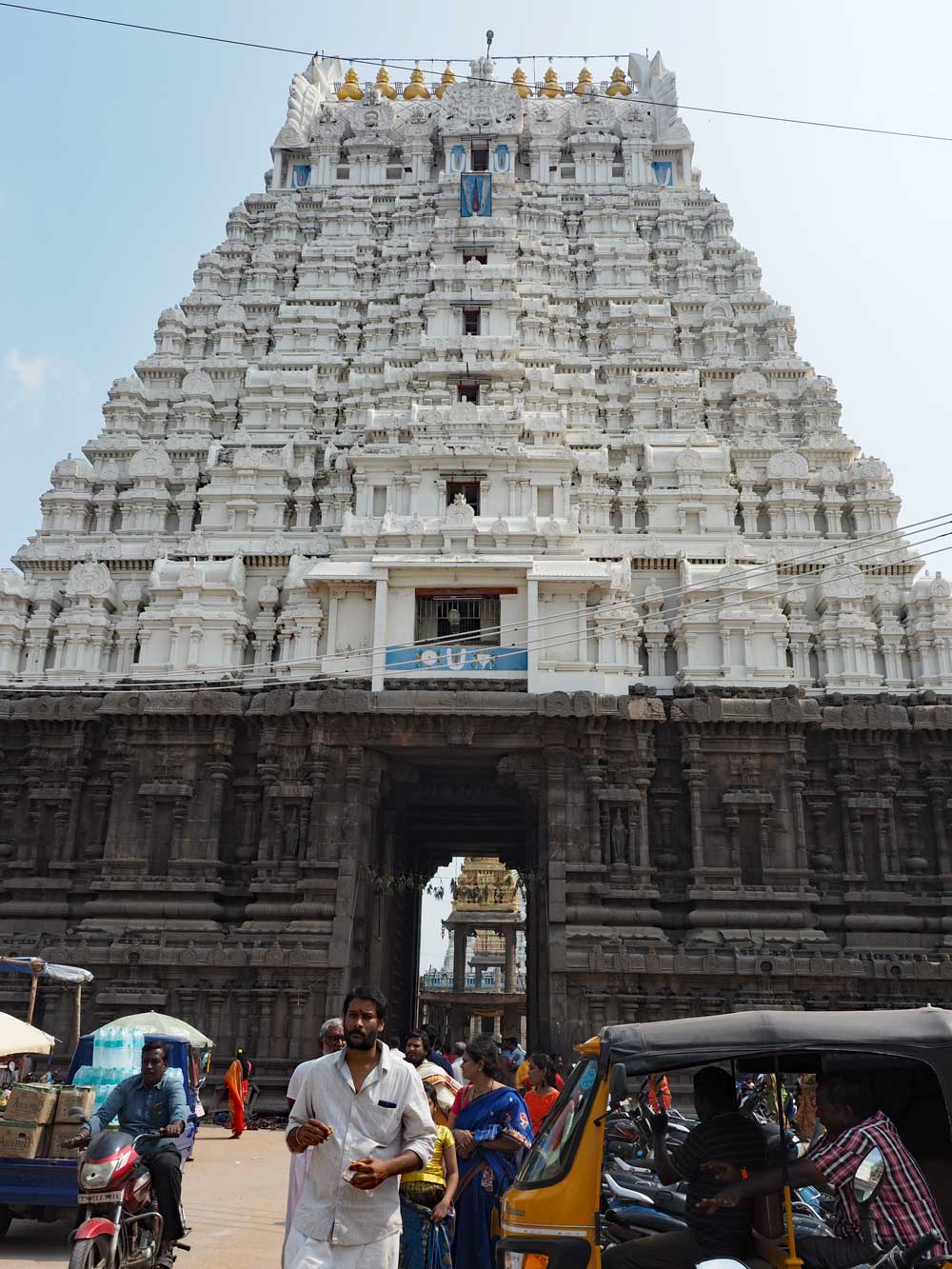
Main gateway to Varadaraja
Temple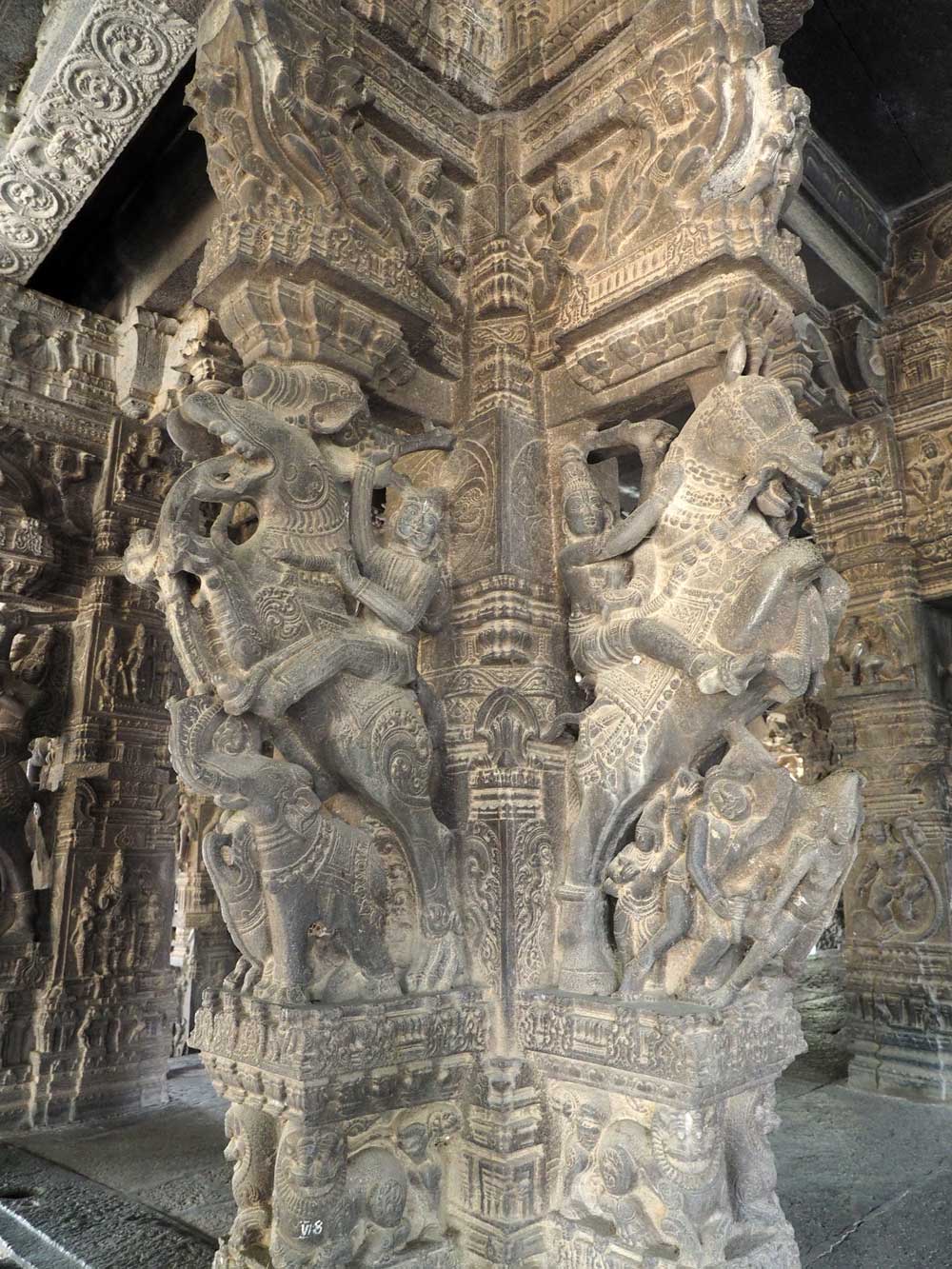
Horsemen
and much, much more decorate this column in the marriage hall.
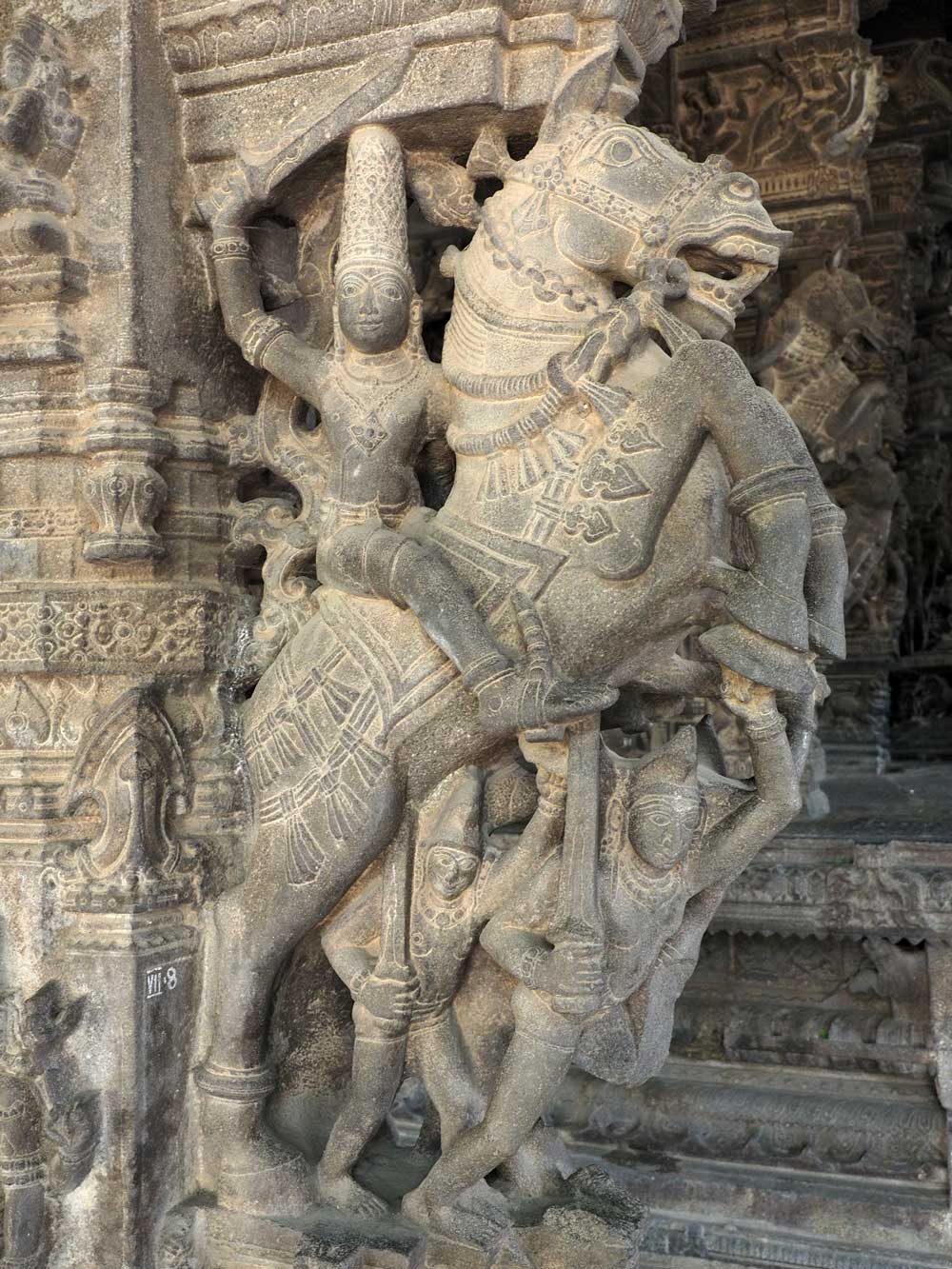
Fierce soldiers
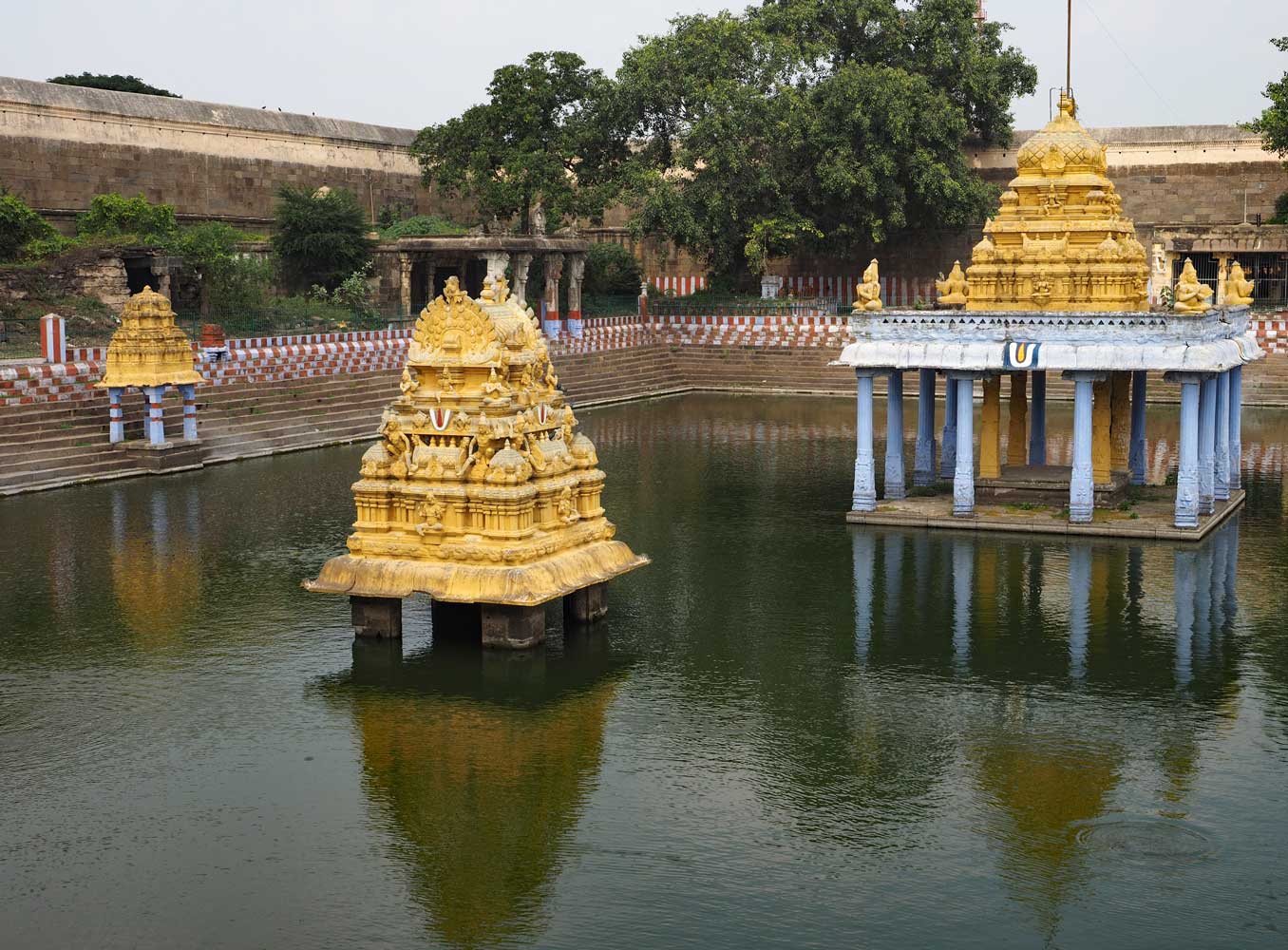
The temple tank
Back at the hotel, I packed up and caught a shared auto-rickshaw to the bus terminal, where I got a basic bus to Chennai. As is common in India, the bus had 2x3 seating, so passengers get squashed a bit. Although much of the route followed expressways, traffic was heavy and made for a slow ride. The bus finally pulled into to the vast 160-platform CMBT (Chennai Mofussil Bus Terminus) on the west side of the city. There happened to be a Saravana Bhavan restaurant nearby, and I walked there for an early dinner. Afterward I got an Uber taxi to my Airbnb ‘Rose Petals’ in the Alwarpet area of Chennai. This is a very convenient location with several of the venues that host the music and dance festivals nearby, but the reason I chose it is because the two women that I will soon meet will be at an Airbnb in the vicinity. My Airbnb was cheaper and more basic in an apartment with a shared bathroom, but also including a kitchen and washing machine. My room had an air-conditioner, but as at Bangalore, weather was so cool that a ceiling fan was all I needed. An Indian-American was staying here to visit his family and a Frenchman had the third room. In the evening I walked to busy TTK Road nearby, which has shops and restaurants. People celebrated New Year’s Eve with music and firecrackers, but I was tired from a long day of sightseeing and riding the bus, so turned in early, with earplugs.
On to Tamil Nadu State: Indian Classical Dance in Chennai
Back to Beginning of South India Backpacking Dec. 2018-Jan. 2019